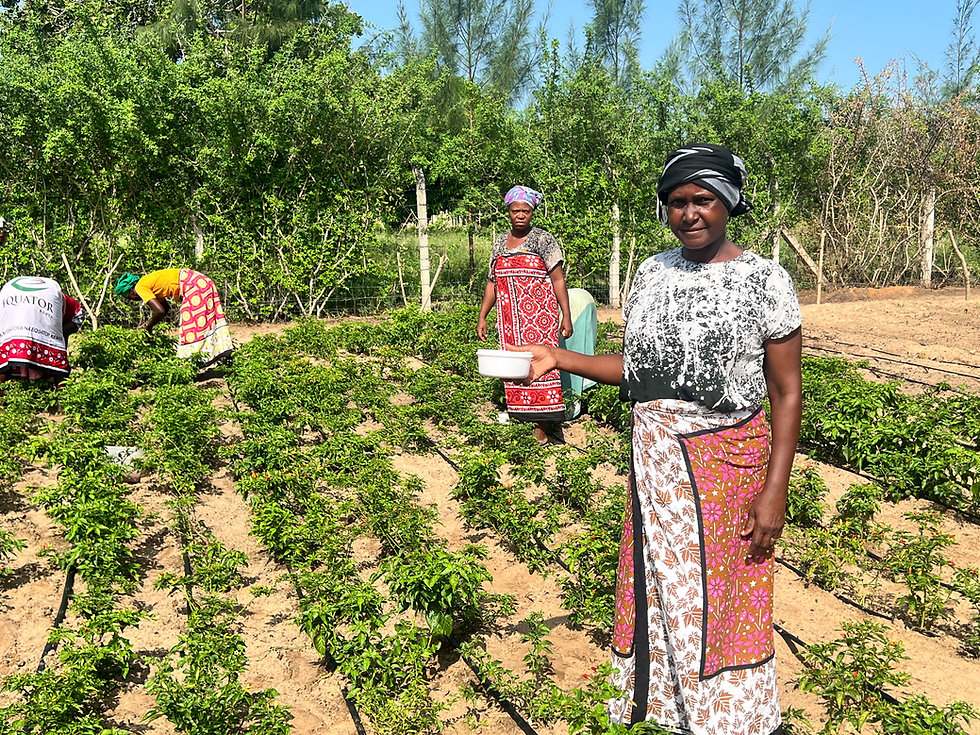Leaving no one behind: how the SUED programme works towards Gender and Social Inclusion
- Louisa Ssennyonga

- Mar 31, 2022
- 4 min read

Socio-economic analyses of most urban areas demonstrate that there are individuals or groups who are excluded from fully participating in their societies. These inequities are often associated with differences in these groups’ socio-economic background, gender, age, ethnicity, religion, and physical ability. In line with the Sustainable Development Goals (SDGs), inclusive development seeks to ensure the socio-economic inclusion of all as empowered self-advocates in development processes and emergency responses. It also works to remove barriers that limit these groups’ access to, participation in, and benefits from development processes.
Urban planning and design are particularly central to enhance opportunities and remove barriers in the access to services and the utilisation of spaces in urban areas, while urban economic planning plays a key role in determining how individuals from different backgrounds access and benefit from economic opportunities. In this vein, the Sustainable Urban Economic Development (SUED) programme, funded by the UK Government and managed by Tetra Tech International Development, utilises long-term planning to bring forward the excluded voices in the management of sustainable development in the urban sector.
Social inclusion in practice
SUED works with municipalities in Kenya to improve their urban economic planning and business environment and enhance municipality actors’ institutional capacity. Together with Atkins Global, Tetra Tech develops Urban Economic Plans (UEPs) that incorporate customised and targeted recommendations to work towards social, economic, and spatial inclusion within their local context.
Social inclusion in Value Chains
Agriculture is the backbone of the economy in many African towns. UEPs consequently aim at the integral development of different links of agricultural products representing a competitive advantage for the region. While marginalised populations normally have a role in agricultural value chain (VC)-related activities, their contribution is often invisible and unpaid. This is for example the case of women and youth, whose contribution in farming is often considered family work. In other cases, there are barriers to access and participation in certain VCs. For example, due to social stigmatisation, persons with disabilities (PWD) are more likely to have low levels of education, lack of access to information, and have low self-esteem - factors that prevent them from participating in VCs.
To work towards inclusive VC development, the UEP identifies key activities of each prioritised VCs and develops a diagnostic for each of them to understand the involvement (or lack of involvement) of marginalised groups. For example, in Mandera, focus group discussions (FGDs) showed that many women engage in the sale of milk and dairy products. However, lack of access to information and to credit or equipment, leads to less competitive prices or limits their opportunities to engage in processing or obtaining certifications to expand their businesses. Hence, the UEP recommended the encouragement of women’s groups and cooperatives, trainings in soft skills, and supporting women’s professionalisation in the sector. The UEP also recommended to implement this in a way that it does not add to women’s time burden, or negatively affect their agency and control over their sales.
Inclusive urban economic development
SUED aims at the economic growth and development of cities in Kenya. However, this needs to be done through the creation of inclusive economies. In Kerugoya-Kutus, FGDs revealed that the Municipality has a young, dynamic, and tech-savvy population, supported by various higher education institutions. However, unemployment is high among youth, with limited job opportunities. There is a lack of initiatives to support individuals to develop their own businesses including aspects of marketing, product design, sales, finance, strategy, digital and e-market opportunities. Hence, the UEP identified the opportunity to develop an Entrepreneurship Centre for small businesses to provide support for entrepreneurs, students, and graduates.
Entrepreneurship centres, however, are not often accessible for low-income communities or people with low literacy levels. Hence, the UEP recommended to draw on initiatives such as the Community-Based Entrepreneurship Development (C-BED) from the International Labour Office (ILO). The key aspect of C-BED is that trainings in entrepreneurship and business skills can be carried out without external trainers or resources. In this way, these opportunities are less costly, more inclusive, and accessible to broader audiences.
Inclusive city visions and urban planning
Based on workshops with local stakeholders, UEPs set out visions that will guide the economic and urban development of municipalities in Kenya. In Kerugoya-Kutus, the role of Green Blue Infrastructure was central to their city vision. Hence, the UEP planned the development and improvement of urban parks and plazas. Public spaces are fundamental for communities’ social cohesion, recreation, civic participation, and sense of belonging. However, the way these spaces are designed can facilitate or hinder these benefits. The UEP consequently recommended adopting universal design standards to allow easy access and use for everyone. For example, avoiding graded routes, installing benches in circulation paths to allow people with mobility impairments to rest, implementing signage that is appropriate to people with hearing and visual impairments, installing appropriate lighting, and providing public toilets and parking space that are accessible to PWD, among other measures.
In the case of Eldoret, their vision was to become a Smart City, enhancing technologies for urban sustainable development. However, Smart Cities are not necessarily a synonym of inclusive cities. New technologies and innovation should be people-centred, and always prioritise the inclusion of marginalised groups, for example addressing the gap in the use and access to technologies. In Eldoret, the planning of paratransit services maps at bus parks and digitized maps were key. Yet, while maps allow visitors and residents to be more informed about transport services and to achieve independent and safe mobility, their design often ignores the needs of PWD. To facilitate their navigation, the UEP included accessibility recommendations such as incorporating tactile maps or narrated digital maps for the visually impaired, as well as maps indicating transport infrastructure that is accessible to PWD.




Comments